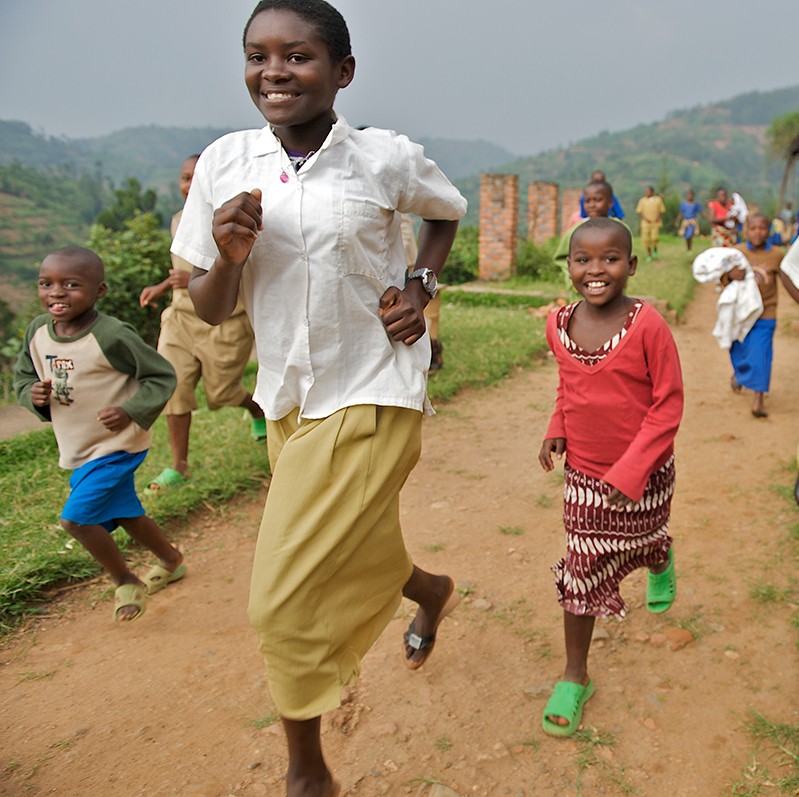In the development field, researchers and policymakers often seek to collect as much data as possible. However, in the quest for data, we can sometimes forget about ensuring we have information – more valuable than data itself. Information is data that have been recorded, classified, organized, analyzed, interpreted, and translated within a framework so that meaning emerges. At the end of the day, information is what guides action and change.
The need for more data
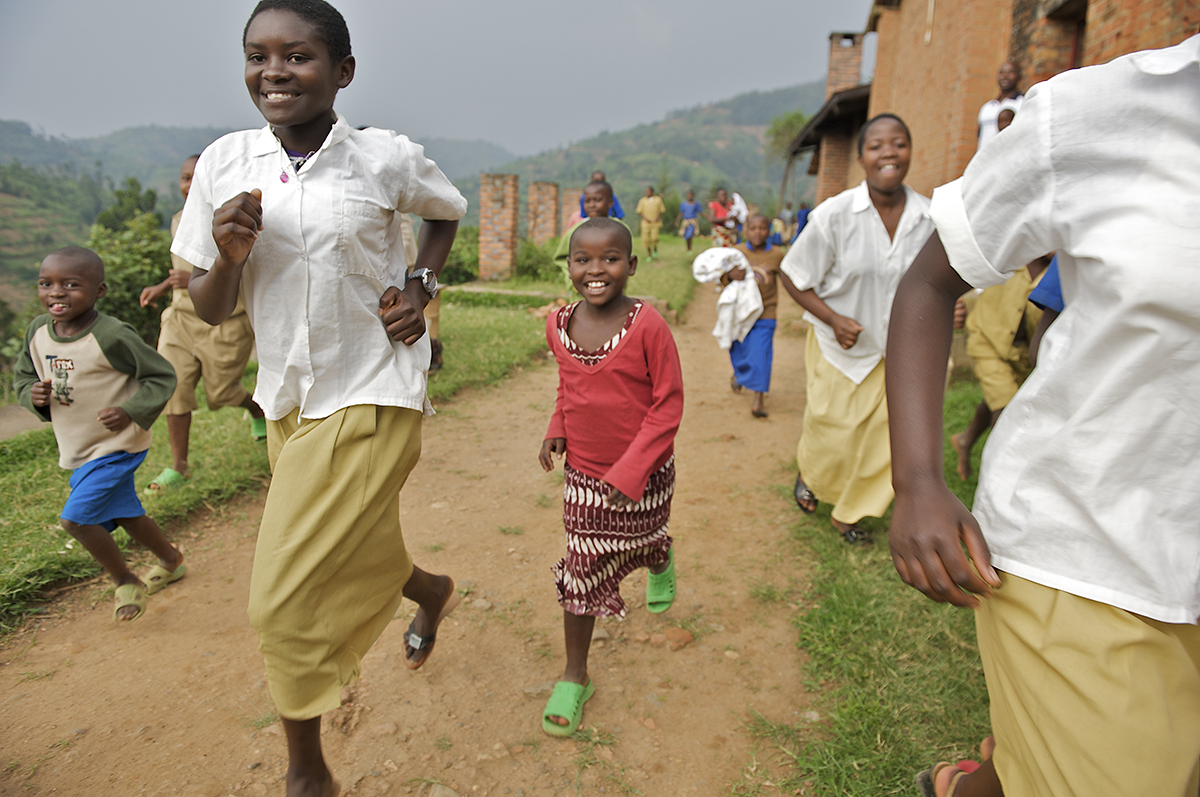
Children run home after attending a Circle of Dialogue, meant to encourage discussion about important social issues like health, hygiene, sanitation as well as issues like HIV, in the village of Rwaza in Musanze district in northern Rwanda.
Photo: Together for Girls
In 2015, world leaders came together to adopt a new global agenda to guide efforts over the next fifteen years, the Sustainable Development Goals. This created the need for countries across the globe to collect data that baseline and track development progress. New initiatives aligned with the 2030 Agenda focus on collecting development data, such as the Global Partnership for Sustainable Development Data. Additionally, there are organizations focused on collecting more and better data in particular areas, like gender data, such as Data2x and the UN Women’s Making Every Girl and Woman Count.
Data to monitor global progress on the goals is critical to keeping countries accountable to their commitments and allows countries to examine how they are doing across multiple, ambitious goals. Equally important, however, is the granular national and sub-national level data that can guide the development and implementation of evidence-based, effective programs and policies. These kinds of data are also often lacking or of poor quality, in which case more data and better data is essential. But a frequently-ignored piece of the puzzle at the national level is improving use of the data we already have.
Making the most of the data we have
To illustrate this point, consider the Together for Girls partnership, which was built on obtaining new data where it was lacking and effectively translating it into information that helps drive policies and programs. We are a partnership between national governments, UN agencies and private-sector organizations working to break cycles of violence, with special attention to sexual violence against girls.
The first pillar of our work is focused on understanding violence against both boys and girls within a country, always at the request of the national government. We do this through a national household survey – the Violence Against Children Survey (VACS), led by national governments, CDC, and UNICEF, and with significant support form the US and Canadian governments, as part of the Together for Girls Partnership.
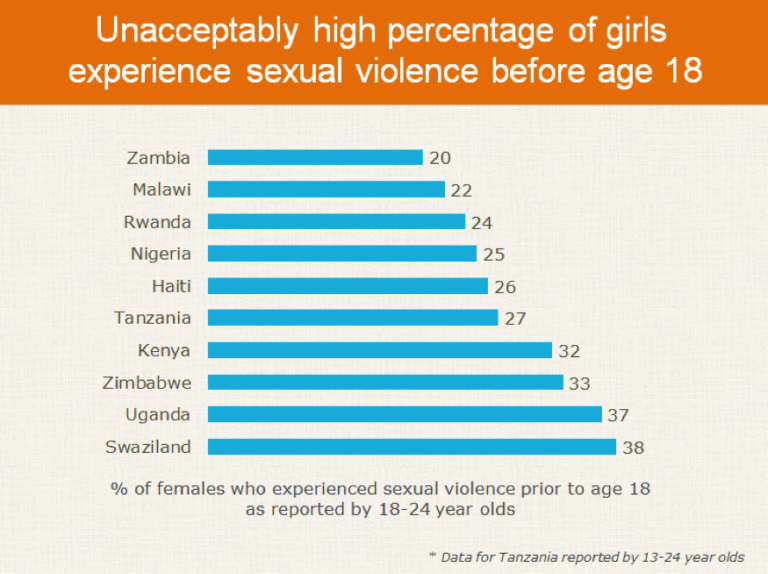
This high-quality national household survey interviews thirteen to twenty-four-year-old boys and girls. It provides strong, reliable evidence that was not previously available. It helps answer key questions that are important to decision-makers, including: What is the magnitude of physical, sexual, and emotional violence against children? What are the connections between violence against children and violence against women? Where is the violence occurring? What are specific risk and protective factors?
As of May 2017, over twenty country partners across Africa, Asia, Latin America, and the Caribbean are in various stages of VACS implementation. To date, ten countries have completed VACS with full reports available and in use, and there is now VACS data for almost 10 percent of the world’s youth population—by the end of next year it will be 16 percent.
The results we have so far are sobering. For example, approximately one out of every four girls report that their first sexual intercourse was forced or coerced. We’ve also found that, albeit at lower levels, boys also experience unacceptably high level of sexual violence. Every country that has undergone a VACS has used the data to guide action to prevent and respond to violence against children, with special attention to gender issues.
The data, and the process of requesting the survey and collecting the data, which includes multiple actors at national-level, has also served to spur high-level political commitment on issues that are often ignored yet interconnected: violence against children, gender inequality, and violence against women. This has led to incredible progress in both prevention and response.
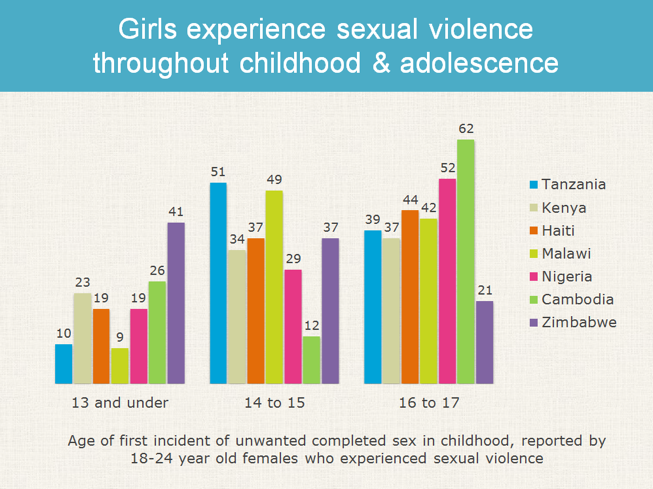
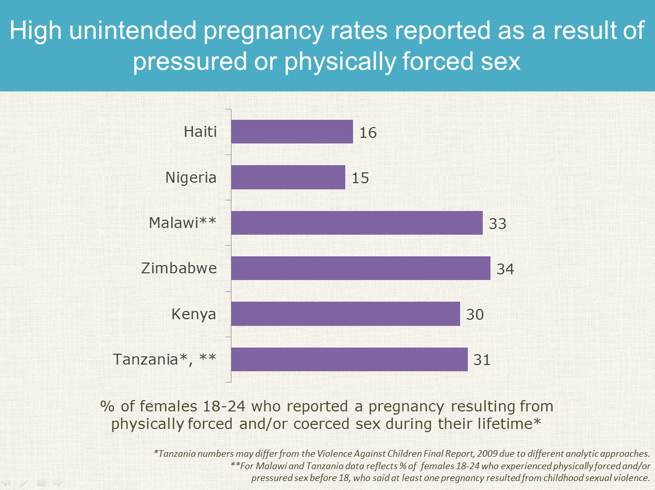
These data sets are rich with information, and even more can be done to use them for decision-making. By further analyzing VACS data to look for trends and associations between violence and issues of relevance to multiple sectors (e.g. orphanhood, mental health, adolescent sexual and reproductive health, education), a fuller picture of the connections between important development issues emerges. This valuable information can help guide interventions and policies across sectors.
Connecting the dots
But data—like our programs—often remain in silos. For example, data focused on violence against children is typically not top of mind for those working on women’s empowerment or adolescent health. Yet, the VACS can offer valuable information about how sexual violence against girls, as young as 13, is connected to adolescent pregnancy—or how one of the most common perpetrators of sexual violence against girls is a partner, a pattern that starts early and is a predictor for victimization and perpetration later in life. However, these data are not consistently used across actors working on programs related to adolescent pregnancy and violence against women.
In our efforts to empower girls and women, let’s not forget that, in addition to having more and better data, we also need to make better use of the data we already have, transforming it into useful information to guide action for the betterment of people and planet.
